In today’s telecom landscape, where competition is fierce, telecom operators need more than just basic offerings like voice and data to stand out. This is where telecom VAS (Value-Added Services) plays a vital role. The meaning of VAS in telecom has evolved significantly, moving from simple add-ons to strategic, revenue-driving offerings that enhance customer experience. With services like eSIM, mobile payments, and cloud solutions, VAS enables operators to differentiate themselves, unlock new revenue streams, and engage customers in deeper ways.
TL;DR
- Telecom VAS provides additional services beyond core offerings, essential for revenue growth and customer satisfaction.
- VAS meaning in telecom has evolved from basic add-ons like SMS to advanced digital services such as eSIM, entertainment, mobile payments, and cloud solutions.
- What is VAS in telecom? VAS includes a wide range of offerings that go beyond connectivity, enriching the user experience.
- The future of VAS in telecom includes emerging technologies like 5G, AI, IoT, and superapps, positioning telecoms as full-fledged digital service providers.
What is VAS in Telecom?
Value-added services (VAS) are services offered by telecom operators that go beyond the foundational voice and data offerings and are designed to enhance and diversify the customer experience. In its early days, VAS consisted of simple add-ons like SMS, ringtones, and caller tunes, which provided extra functionality but were considered secondary to core services. However, as digital technology and consumer expectations evolved, so did the meaning of VAS in telecom.
Today, VAS encompasses a wide range of digital services, from mobile entertainment and payments to cloud storage and eSIM. These services play a central role in modern telecom by meeting diverse customer needs and delivering an enriched mobile experience. Features like eSIM allow users to manage mobile plans seamlessly without needing a physical SIM card, providing flexibility that aligns with the needs of today’s mobile-savvy users. According to Precision Reports, the global Mobile Value-Added Services market was valued at USD 994.88 billion in 2023 and is projected to reach USD 3,132.61 billion by 2032, growing at a compound annual growth rate (CAGR) of 13.59% over the forecast period.
This transformation has shifted VAS from being a complementary offering to a powerful business driver for telecom operators. VAS is now a key factor in loyalty and customer retention in telecom by providing engaging, personalised experiences that set operators apart in a competitive market. In addition, VAS generates new revenue streams through subscriptions and other digital services, solidifying its role as a core component of telecom strategies.
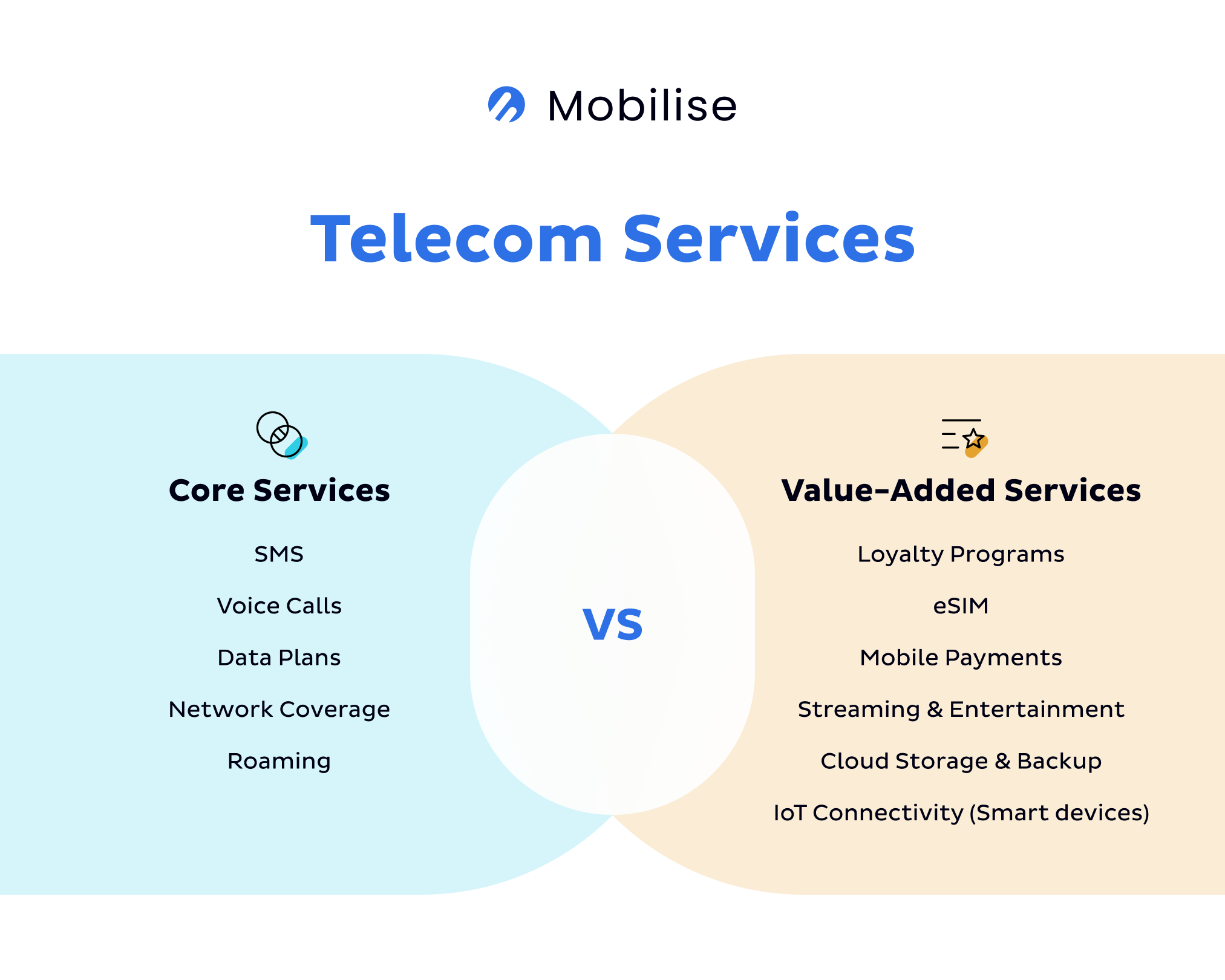
VAS as the Engine for New Revenue Streams
Telecom VAS is more than just an add-on; it’s a vital tool for revenue diversification. By offering VAS, such as mobile entertainment, financial services, and eSIM services, operators can attract new customers and deepen engagement with existing ones. These services enable telcos to tap into growing markets outside traditional voice and data, opening opportunities for recurring revenue through subscriptions, digital purchases, and service bundling.
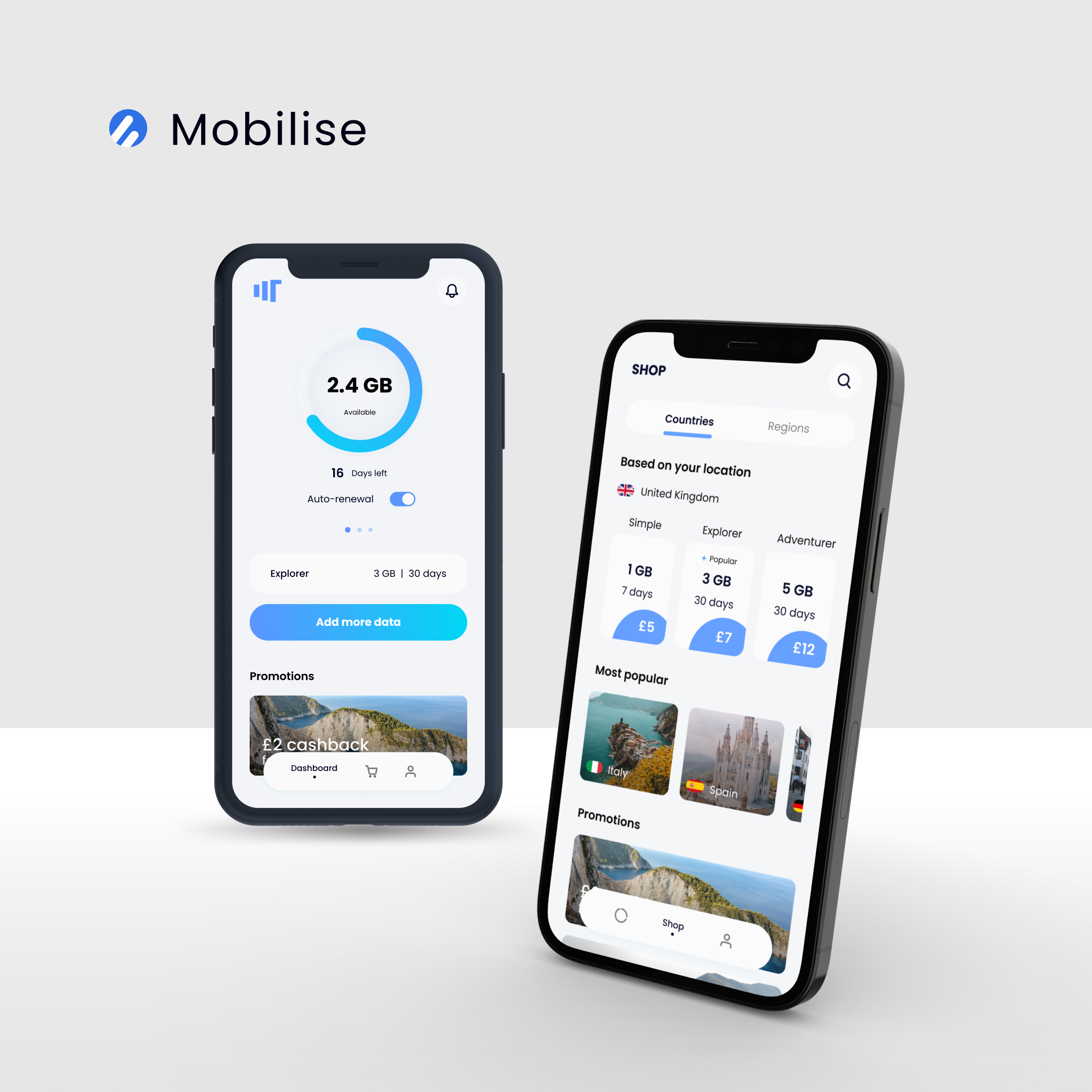
One notable example is the rise of eSIM as a value-added service. By enabling users to activate mobile plans digitally without a physical SIM card, telecoms have found an innovative way to support frequent travellers and digital nomads. This service has not only generated new revenue from international and multi-profile customers but has also streamlined the onboarding process, making it more convenient for users to manage multiple data plans.
Another example is in mobile financial services. In Asia, WeChat and Kakao, originally messaging apps, have since expanded and leveraged mobile wallets as a VAS, enabling users to make payments and transfer money directly through their mobile apps. These offerings provide convenience and accessibility, generating recurring income while strengthening customer loyalty.
The potential for VAS in telecom is vast, especially with the expansion of 5G-enabled services and superapps. 5G can power immersive experiences like augmented and virtual reality and ultra-fast mobile gaming, creating fresh VAS opportunities. Telecom superapps, which bundle diverse services such as payments, entertainment, and eSIM management in a single platform, are also gaining traction. By integrating multiple VAS into one app, telcos can offer users a seamless experience and capture even greater engagement and revenue potential. In fact, a survey by PYMNTS found that the most valued aspect of superapps is the benefit of convenience.
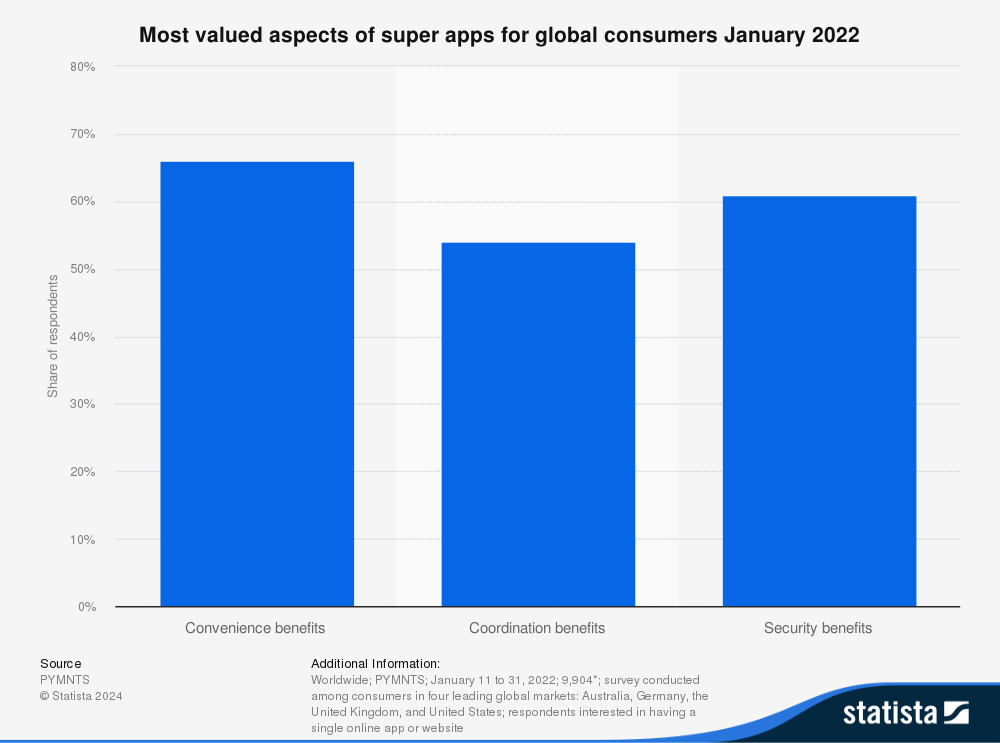 Source: Statista
Source: Statista
Customer needs are becoming more complex, and VAS empowers telecom operators to build comprehensive digital ecosystems, offering a sustainable and scalable path to revenue growth.
Customer Experience: The New Battleground for Telecoms
In a highly competitive telecom industry, the quality of customer experience has become the primary differentiator among operators. The focus has shifted towards delivering superior customer experiences through unique and personalised telecom VAS. This shift is vital for telecoms looking to retain customers, reduce churn, and build long-term loyalty.
Telecom VAS, such as loyalty programs, content services, and tailored eSIM options, allows operators to create engaging experiences that resonate with users. These offerings go beyond basic connectivity, fostering brand loyalty by aligning services with individual preferences and needs. For instance, loyalty programs that reward customers for their usage or tenure encourage retention, while personalised content services like streaming or gaming packages provide customers with added value that strengthens their connection to the brand. Boston Consulting Group found that top-performing loyalty programs report a 78% increase in engagement, a 46% increase in loyalty, and a 51% boost in spending.
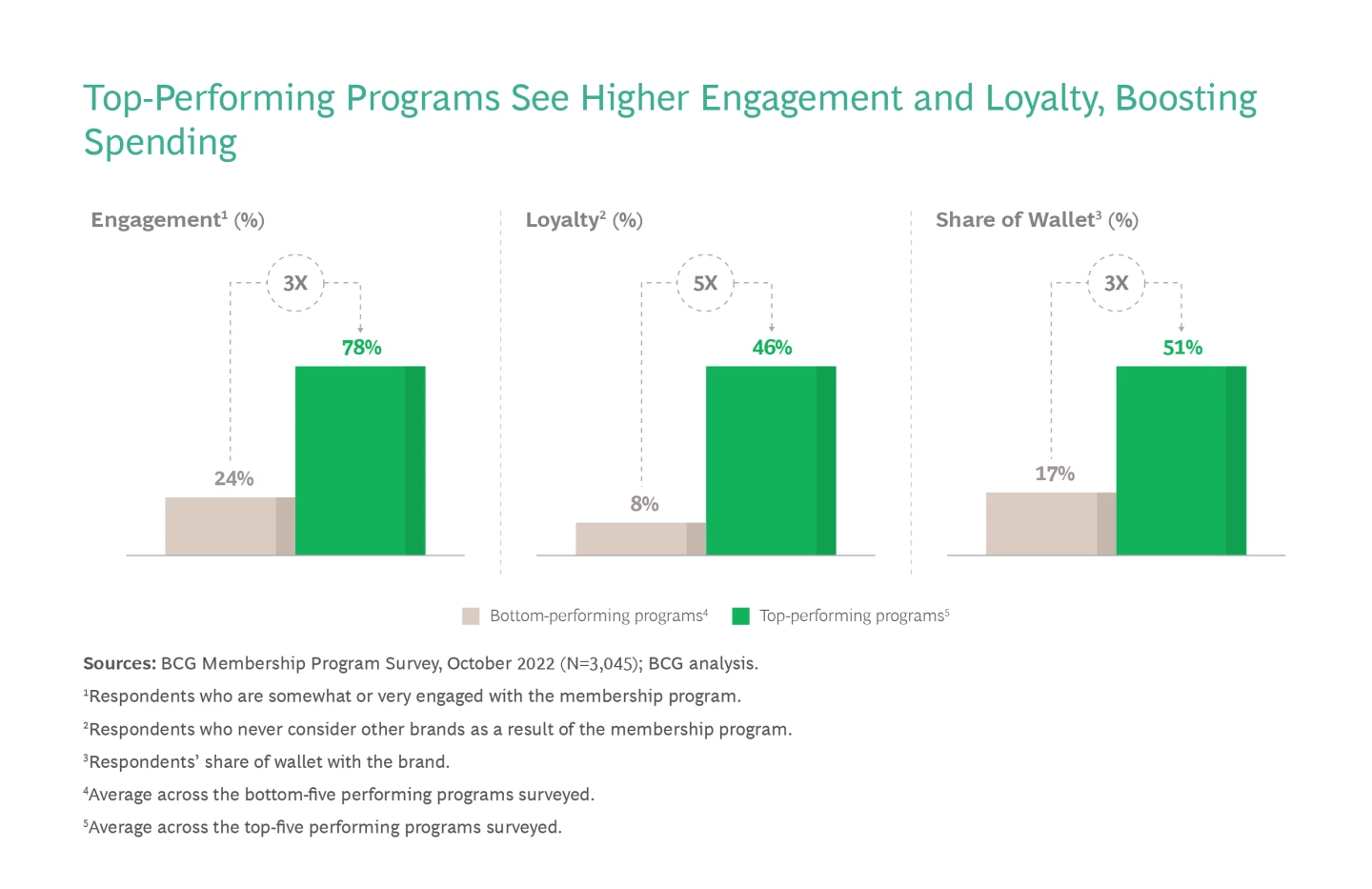 Source: Boston Consulting Group
Source: Boston Consulting Group
A prime example is eSIM, which simplifies the onboarding process and enhances flexibility for customers. By enabling seamless plan management without a physical SIM card, eSIM appeals to users who frequently travel or require multiple profiles on a single device, such as digital nomads and remote workers. This feature improves convenience and drives loyalty by offering flexibility that traditional services cannot match. In fact, we found that 72% of travellers think purchasing a travel eSIM is as easy as using Wi-Fi or purchasing roaming data packages from their existing network providers.
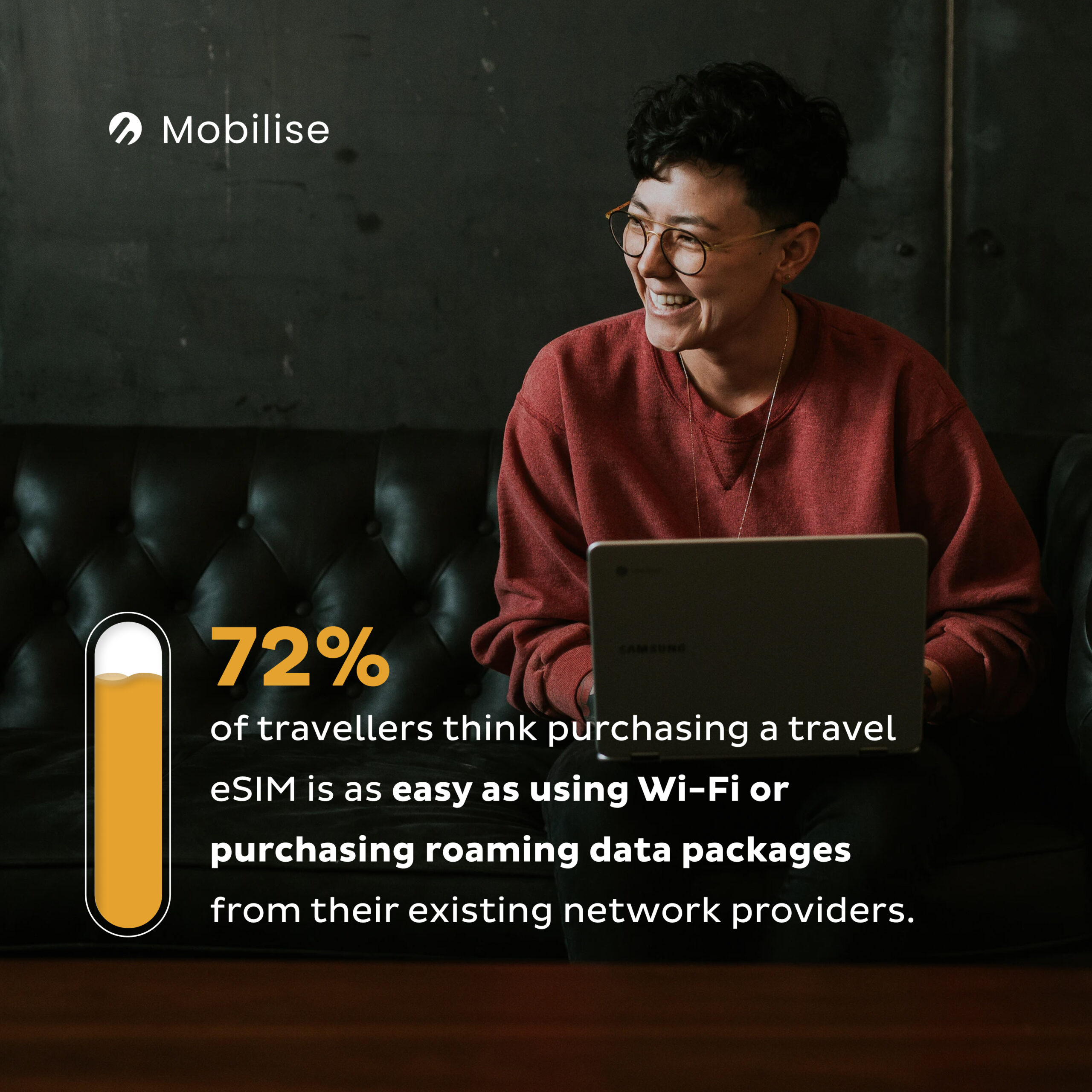 Source: Mobilise
Source: Mobilise
As digital experiences set new standards across industries, telecoms are adapting to meet similar expectations. Operators that prioritise customer experience in telecom by integrating advanced, personalised VAS will stand out in a crowded market. Those who excel in creating customer-centric services—whether through loyalty rewards, exclusive content access, or flexible eSIM options—position themselves to attract and retain customers, ultimately building a loyal customer base beyond price-driven competition.
The Competitive Advantage of Offering Unique VAS
Telecom VAS is the secret weapon for staying ahead in the saturated market. With voice and data increasingly commoditised, VAS provides a critical path for operators to stand out and increase ARPU in telecom by offering unique services that engage customers beyond basic connectivity. By leveraging VAS, telecoms can diversify revenue streams and enhance customer loyalty through tailored high-value experiences.
VAS allows telecoms to customise offerings for different customer segments, transforming a one-size-fits-all model into a more personalised experience. For instance, customer segmentation and personalisation can turn data insights into precise offers, like entertainment bundles for younger users or flexible eSIM plans for digital nomads and frequent travellers. Such targeted VAS solutions improve customer satisfaction and drive additional revenue through cross-selling and upselling opportunities. According to Epilson, 80% of consumers say they are more likely to do business with organisations that provide tailored experiences, Proving that personalised experiences lead to higher engagement, directly boosting ARPU, loyalty, and customer retention rates.

The future of VAS extends beyond traditional services and can unlock new opportunities in emerging sectors such as fintech, entertainment, smart cities, and the Internet of Things (IoT). telcos are now perfectly positioned to capitalise on these trends, moving from basic communication providers to digital service providers. For example, VAS, in the form of mobile wallets and payment solutions, can offer convenient financial services, while partnerships with streaming platforms provide exclusive content that keeps customers engaged. In the context of smart cities, telecoms can introduce IoT-based VAS, offering solutions like smart home security and connected utilities, which add value to urban living and open up sustainable revenue channels.
As VAS continues to evolve, operators that invest in innovation will be well-positioned to lead the market. Superapps—integrated platforms that bundle various digital services, from payments to entertainment and eSIM management—are a growing trend, combining multiple VAS into a single, user-friendly interface. By embracing this comprehensive approach, telecoms can create a seamless, all-in-one experience for users, capturing greater market share and increasing ARPU by meeting a broader range of customer needs within a single ecosystem.
Through strategic VAS, telecoms can transform their customer journey, drive up ARPU, and secure a lasting competitive advantage in an increasingly digital world.
The Future of VAS in Telecom: Beyond Communication
The future of telecom industry is evolving from traditional connectivity providers to comprehensive digital service providers, leveraging VAS to meet diverse customer needs. Technologies like 5G, AI in telecom, and IoT are driving innovation in VAS, enabling telecoms to offer hyper-personalised services, predict user behaviour, and optimise network management for seamless customer experiences. And the integration of VAS with industries such as Media and Entertainment, Healthcare, and Retail, along with services like mobile payments and IoT, is expanding the telecom value chain, enhancing customer engagement, and unlocking new revenue streams beyond voice and data.
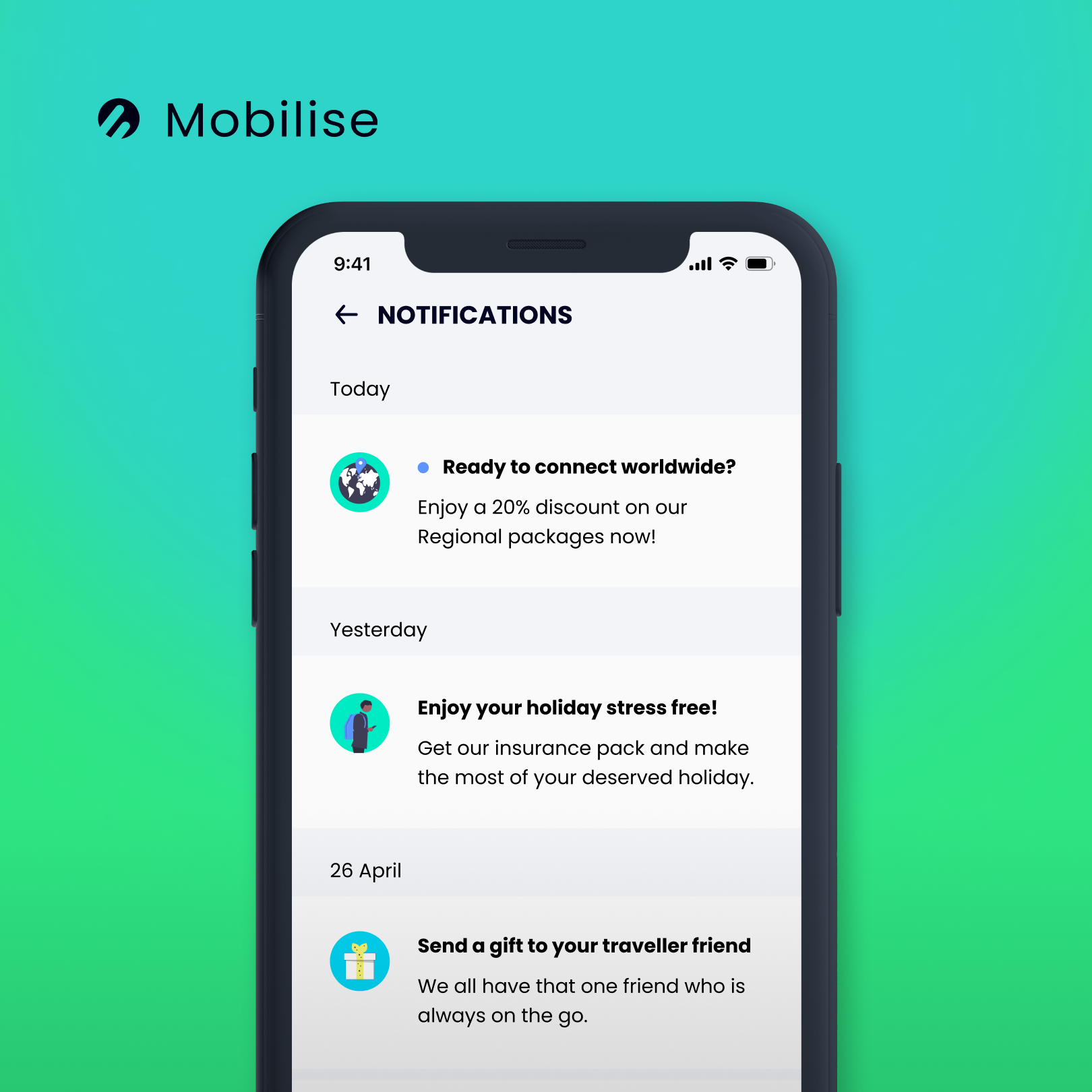
A key trend is the rise of superapps, especially in the global West from the likes of Facebook, Apple and Uber. For instance, Facebook now offers shopping and gaming features, Apple enables users to send and receive money via Apple Cash within the Messages app, and Uber has expanded its services beyond car rides to include grocery delivery and travel bookings. This integrated approach enhances user convenience and maximises customer retention, as users rely on a single digital environment for all their needs. Gartner analysts forecast that by 2027, over half of the global population will engage as daily active users across multiple superapps. As more telecoms invest in developing superapp capabilities, they position themselves at the centre of customers’ digital lives, driving VAS growth and ensuring a strong competitive advantage.
Conclusion
Telecom VAS is no longer about adding a few extra features; it’s at the heart of a telecom operator’s strategy to stay competitive, drive new revenue, and create a better customer experience. As the industry continues to evolve, those who leverage VAS to innovate and adapt to changing customer needs will be the ones who thrive. The future success of telecoms lies in their ability to offer new and engaging services, making VAS a crucial element of their growth strategy. Embracing the future of VAS in telecom means unlocking a world of possibilities for operators and their customers.



